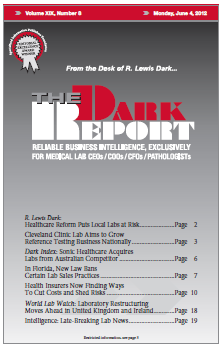CEO SUMMARY: In the national market for reference and esoteric testing, Cleveland Clinic Laboratories (CCL) is preparing to expand its presence. It has just moved into a $75 million state-of-the-art laboratory facility and wants to increase its outreach reference testing by four-fold within five years. A doubling of the national sales force is in the …
Cleveland Clinic Lab Aims to Grow Reference Testing Read More »
To access this post, you must purchase The Dark Report.


